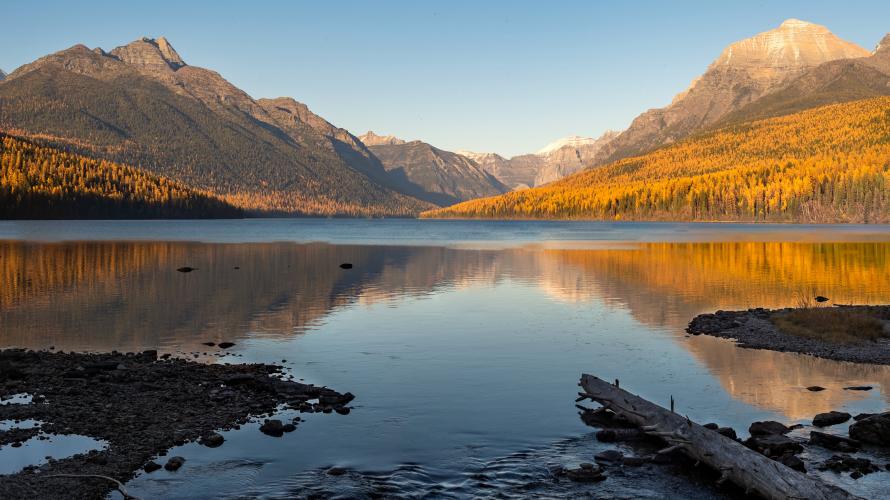
Finding Autumn Gold
~Doug Stevens
Sure, according to the calendar, Fall goes on until the Winter Solstice in December. However, the color change associated with Fall doesn’t last the whole season. In most years, starting from mid-September there is an orderly progression of color – starting up in the high country with aspens and smaller brush, such as huckleberries and mountain ashes turning their yellows and reds. It then works its way down to lower elevations with the river cottonwoods changing color by mid-October. As an outdoor photographer, this is the season I look forward to all year. However, this year has been a little different, at least in my neck of the woods (northwest part of our state). That arctic blast we got in the third week or so of September seems to have shocked many of the trees around here. Many of the cottonwoods are giving the expected yellows, but rather turning brown then falling off without the great color show of years past.
But there is one tree still to come – one that many feel tops all of them – the tamarack. Our tamaracks here are actually more technically known as the “western larch” (Larix occidentalis) and are native to the Inland Northwest and Pacific Northwest, such as northwestern Montana, northern Idaho, Washington – all areas west of the Continental Divide. Some areas, like the western portion of Glacier National Park, along the North Fork of the Flathead River, the forest seems to be upwards of 50% western larch. However, it is rare to find larches east of the Divide, so perhaps residents of eastern Montana have never seen one. Tamaracks, along with beargrass flowers are iconic of the northwest portion of Montana.
True tamaracks are actually the eastern larch (Larix laricina), and grow in swampy, boggy areas from the Great Lakes region to the northern eastern seaboard. The word “tamarack” itself is an Algonquian word (according to Wikipedia), used originally by tribes of the east. But, “tamarack” is such a good word that we have adopted it for our western larches, as well.
Regardless of whether eastern or western, larches are deciduous conifers – that’s right, pine-like trees that turn color and loose their needles every year. This happens after the aspens trees have all turned yellow and lost their leaves, after the river cottonwoods have likewise gone through their colors and leaves dropped, the mountain maples have all gone bare. It is beginning to happen right now. The green needles of summer are starting to yellow up, and will reach a crescendo around the beginning of the last week of October. Usually by Hallowe’en they have peaked, but they last well into November. And the color? They turn a deep, rich gold – a gold well beyond that of the aspen. For those on the east side of the state who may not have seen this yearly ritual, it can be very impressive to see a whole mountainside turn bright gold. When my wife and I first moved to northern Rockies from Colorado many, many years ago, we arrived right at the beginning of November. I had never seen “pine” trees turn yellow. I thought - ‘is there something going on with the forest here?’ What the changing aspens are to Colorado, the tamaracks are to northwest Montana and northern Idaho. It can be so striking that now Glacier National Park have webcams devoted to broadcasting this change of color – a “larchcam”, so to speak
So, now is the time to make plans to get out and see this spectacle! Weather permitting (a big “if” this year), find a trail on the west side of our state and enjoy hiking through these forests of gold while they last. Even the trails become “paved with gold”, as they drop their needles. After the tamaracks change, it will be a long time before the colors return in the Spring!
Finding Gold in Western Montana
